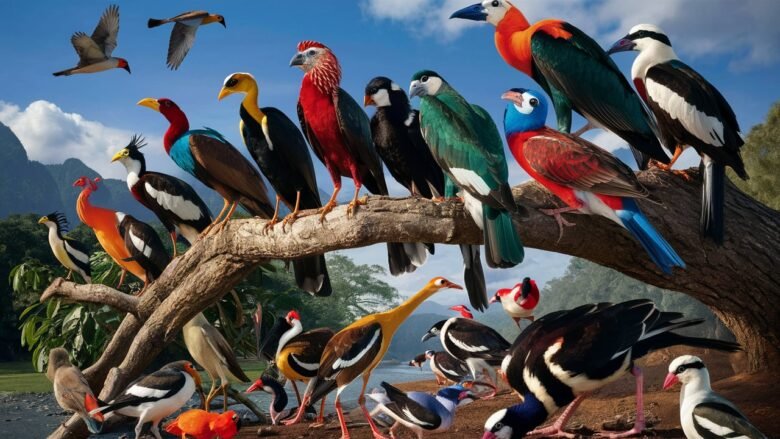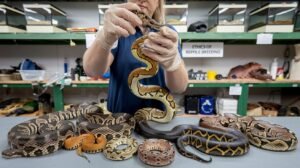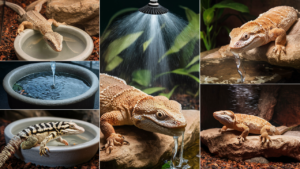Bird species conservation is crucial for maintaining biodiversity and ecosystem health. This article delves into the various aspects of protecting endangered birds, including conservation programs, habitat preservation, and the role of organizations in safeguarding avian species. A comprehensive understanding of these topics is essential for effective conservation efforts.
Understanding Bird Species Conservation
Understanding bird species conservation is essential to maintain biodiversity and ecosystem balance. Bird populations face threats like habitat loss, with over 50% of global wetlands lost since the 1700s; invasive species displace native birds; overhunting disrupts ecosystems; and climate change alters migration patterns. Currently, about 1,400 bird species are endangered, underscoring a critical need for conservation initiatives. Global efforts must prioritize bird conservation to mitigate these threats and foster resilient avian populations.
The Plight of Endangered Birds
The plight of endangered birds is multifaceted, characterized by habitat destruction, predation by invasive species, and climate change. The Hawaiian crow, once abundant, now faces extinction due to habitat loss and disease. Similarly, the California condor, ravaged by lead poisoning and microtrash ingestion, exemplifies dire conservation challenges.
Organizations play a crucial role in monitoring populations and assessing threats. Their efforts enable informed intervention strategies, like the recovery of the California condor through lead-free ammunition campaigns and intensive breeding programs. Sustainable management of these species hinges on proactive conservation actions.
Effective Conservation Programs
Effective conservation programs play a crucial role in protecting endangered bird species. Techniques such as **captive breeding** help to increase populations in controlled environments, ensuring genetic diversity and bolstering numbers. In regions like California, **habitat restoration** initiatives have revitalized environments for the California condor, demonstrating the profound impact these programs can have.
Additionally, **species recovery plans** are tailored strategies that outline specific actions needed to restore populations. The successful recovery of the peregrine falcon showcases how targeted interventions, including banning harmful pesticides and creating protected nesting sites, can lead to remarkable population rebounds.
In the Pacific Northwest, detailed approaches have been employed to protect the marbled murrelet by establishing conservation areas and monitoring nesting success. Such collaborative efforts between governmental organizations and non-profits underscore the importance of coordinated support.
Conservation programs also foster community involvement through educational initiatives, empowering local populations to become stewards of their avian neighbors. This grassroots approach not only aids in immediate conservation goals but also builds long-term support for bird species.
These concerted efforts across various regions highlight the need for a multi-faceted approach to bird conservation, ensuring that not only are endangered species saved but that their ecosystems flourish alongside them.
Supporting Wild Bird Habitats
Supporting wild bird habitats is crucial for overall bird conservation efforts. Healthier ecosystems provide the resources necessary for nesting, feeding, and migration. Implementing **habitat corridors**, designed to connect fragmented landscapes, enhances bird movement and genetic diversity.
**Protected areas** serve as sanctuaries, safeguarding critical habitats from degradation. Successful examples include the **Yellowstone to Yukon Conservation Initiative**, which preserves vast ecosystems. Community involvement in habitat restoration projects has proven effective, such as the **Chirag Wildlife Sanctuary** in India, where local citizens actively participate in reforestation.
Partnerships with local governments and organizations foster sustainable practices that benefit both wildlife and communities. Engaging locals in conservation promotes stewardship and raises awareness of the intrinsic value of bird habitats. This holistic approach ensures lasting protection for avian species worldwide.
How You Can Help
Taking action in bird conservation requires individual commitment and collective effort. You can start by supporting local conservation organizations that work tirelessly to protect endangered avian species and their habitats. Engaging in citizen science programs, such as bird counting or habitat monitoring, provides invaluable data for conservation efforts. Additionally, promoting bird-friendly practices at home—like installing bird feeders, using native plants in your garden, and adhering to safe window solutions—creates a welcoming environment for local birds. By fostering awareness and participation, each individual plays a crucial role in preserving avian biodiversity, ensuring a thriving future for these essential creatures.
Conclusions
In conclusion, bird species conservation is a multifaceted challenge that requires collective action to address threats like habitat loss and climate change. By supporting conservation initiatives and preserving habitats, we contribute to the survival of endangered birds and the overall health of our environment. Each effort counts in this critical mission.



